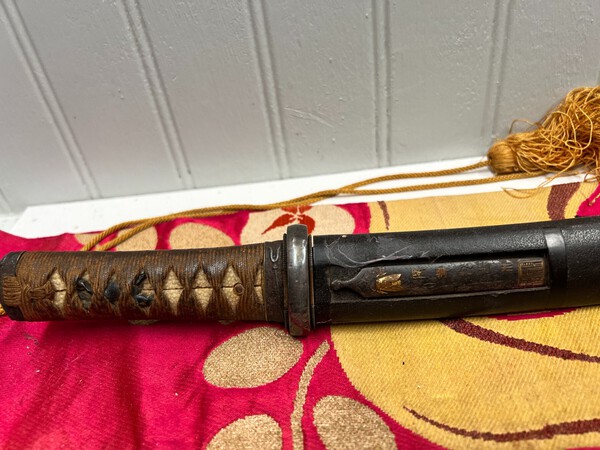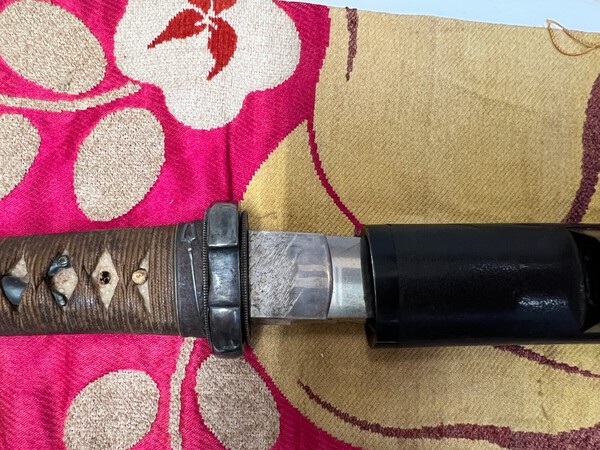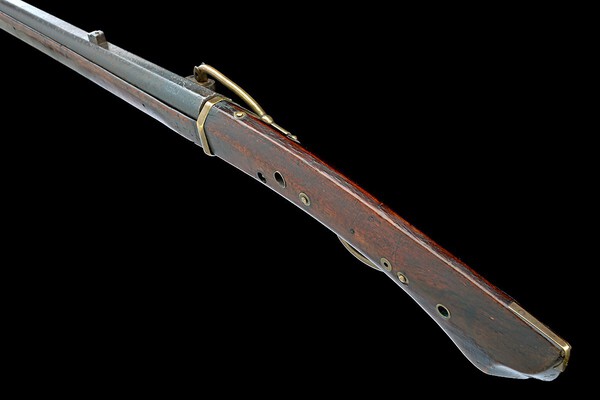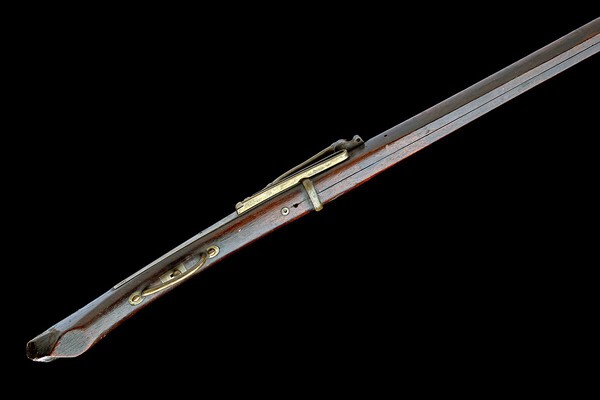All Activity
- Past hour
-
Jesse, it does look like J9 - But the J may be an E or F written in perhaps an old German font? Strange place to put a museum catalogue number but the seppa-dai is probably too rough of a flat area? Do you know where the guard came from?
-
And I would have sold such a tsuba for 2k to 3k. I really need to divorce myself from sales and let free market take over. Thanks for the follow up. Good luck in your future tsuba purchases.
- Yesterday
-
Wow - discussion with Chris Bowen and George Trotter taking active and as always participation that is measured, polite and includes reasoning for some of their opinions and preference based on many years of study and expertise - thanks for this. - Personally - Sashikomi all the way !
-
Thank you for your comments Charlie. A subject of which I have no knowledge whatsoever as my collecting has been mainly concentrated on gendaito swords from WW2. Having posted this for comments I have been reading some old threads about gold menuki on this forum and have quickly realised that cast and modern is not so desirable and I can appreciate the reasons. I am reluctant to name the gentleman who I initially asked for his thoughts as his main interest are tsubas and he freely admitted that in so far as menuki were concerned, there were gaps in his knowledge. He has written books on oriental art and I was informed was a curator in a museum with oriental artefacts, so he is someone who I respect. I will attach his email, name redacted, so others can read his thoughts. Whatever conclusions the more informed reach, nothing will take away from my joy at finding something like this on what was a dirty but very affordable tanto. I’m not trying to sell them or deceive anyone. Just after observations / comments.
-
Hello, This is not a buffet. The Togishi is an artist in his own right. This duality between "hadori bad, sashikomi good" is the wrong way to think about it. Blades are artistically elevated by a sensitive Togishi, who in the process of exercising his craft, decides on the appropriate rendition of the work. Some Togishi are better than others, and in fact this is an understatement. It is not just a matter of being traditionally trained - there are a few Togishi who far exceed all others in the field, and all great blades go to them, which in turns makes it difficult to emerging talent to gain sufficient experience in treating masterpieces appropriately. This is why there is a social component to it, and I think it's appropriate to every once and a while, give an opportunity to a recent winner of the polishing contests held by the NBHTK to work on important swords. This is correct, Ono Kokan, Fujishiro, Hon'ami Nishu, Saito, and other great masters exercise a refined gradient of Hadori appropriate to the blade. Their polishes are precious in their own right. The appropriate amount of hadori on a Masamune blade is not none. The appropriate amount on a run-of-the-mill Kanbun Shinto blade is way, way more hadori. Why? Because the nie is less deep, the nioiguchi is harder, and the hataraki are absent, leaving a 'blank' hamon that is typical of run-of-the-mill Shinto. With a heavier hadori, the otherwise blank Kanbun Shinto will appear with a stronger contrast that is meant to evoke the bright, snowy nie that is typical of Kamakura period masterpieces. The emphasis on "meant to evoke" - because with a trained eye, it of course does not pass. The intention remains. And here I say Shinto - but it's really case-by-case, there are wonderfully active blades with deep nie by smiths such as Hankei, and these should be treated closer to Norishige, which implies a light hadori touch. Another principle: Gentle notare rich in activity is perfect for some tasteful gradient of Hadori applied, the outline of the hamon can be followed by the finger of the polisher and matches the flow. Only on extremely flamboyant hamon and high quality Bizen-den should one truly opt for pure shashikomi in my opinion. When in doubt, better to ask Tanobe sensei. Best, Hoshi
-
Interesting piece. The nakago, the overall, and the macro of activities (which are clearly visible here) would tell us a lot. Otherwise, yes, its authentic nihonto, quite probably post 1520, but within this range it can be many things. Hamon has a certain Edo period vibe, but hada wants to look like koto. But for now its all a wild guess - with better pictures we'll narrow it down to something rather specific.
-
Conversely, it has been said that an excellent hadori will allow you to see all of the hataraki contained within it, a kind of ‘best of both worlds’.
-
Thank you, Moriyama San!
-
I may have something of interest. I came into a decent size collection all at once and have a katana with Satsuma mon on the kashira and also on the koiguchi of the saya, both seem to be sterling silver. Fuchi however is old iron with no mon. Saya appears to be old, it has a large iron kojiri with great patina on it. The tsuka was rewrapped in the 1980's according to my notes, and the koshaire is sort of tachi style, but not an elaborate one. The blade may be koto, but I have not done much research at all on this piece. Blade is good condition and in decent polish. If it did not have a few kitae-ware on one side, it would be an excellent blade. I am not sure the blade is from the Satsuma area. If this interests you at all, let me know, I will take some pics but it may take a week or two. Jason
-
Hi Kevin, A very interesting menuki pair! I am not an expert on menuki but have a great enthusiasm for it. The filled / not hollow back, the thickness of the plate, and the smoothness of the back all made me believe that this was made rather late, not early. Lacking studs is a hallmark of early Muromachi menuki, but this pair doesn't show any other signs of being made in that time. My personal guess is after 1800. It's quite possible my opinions are not reliable and I would also love to hear from real knowledgeable people out there. Best, C. C.
-
Hello J, @buzzukka, welcome to the forum, and very cool tanto! I'm going to relocate your post to the "Nihonto" section. Your grandfathers WW2 story is cool and may be true, but I believe you have an older, traditionally made, Japanese TANTO here. Also, it's not outfitted in WW2 military fittings. Therefore, I think you will get better feedback in the Nihonto section. Proceed with patience and caution, and best of luck. Let me know if you have any issues/concerns, -Sam
-

Help Identifying Sword from Grandfather in Burma during WW2
Ray Singer replied to buzzukka's topic in Nihonto
Please carefully remove the handle and show a clear vertical photo of the nakago (tang) on each side. -
付け足し茎 reads Tsuketashi Nakago ( Extended or added tang). 足し (tashi) does not mean leg in this context.
-
You are right. Another common reading is Keiji.
-
buzzukka joined the community
-
According some polishers, a good sashikomi is much harder to achieve than a hadori
-
Hi, I am trying to identify my grandfathers sword from WW2. The story is that he took the sword off of a Japanese officer while overseas in Burma. We are not sure about the flag that goes with it either but as far as anyone can remember they (the flag and sword) have been together. I have attached some photos but please let me know if more photos would help. Thank you!
-
Loving the dark patina on this one. A trusty Ashigaru battlefield gun. Possibly Inatomi-Ryū school of gunnery, and possibly made in Kunitomo. Also I have a special attraction to the 鉄線 Tessen clematis Mon. Yours is Tessen-guruma or ‘clematis wheel’ design. Congratulations! Looking forward to your updates.
- 1 reply
-
- 2
-

-
So maybe 啓司 (Hiroshi), do you think?
-
Thank you Uwe!!!
-
Bruce, here are some more pics (no seppas). Thanks for sending the Plimpton's book pages! Wow, very nice! That is my sword, but light years better. Do you have any idea on how I might repair the handguard? My sword has had a tough life but I like it much! It's seen a lot of history.
-
Lareon started following Second Teppo
-
Less Decorative than my first, This one doesn't have the decoration like my osaka variant. Not removed the barrel at all but once i have it in hand i'll take some more pictures.
- 1 reply
-
- 1
-

-
Need help identifying a teppo
Fabian23 replied to thisisadisplayname's topic in Tanegashima / Teppo / Hinawajū
The beauty of these matchlocks is that almost everything can be easily made without specialist tools. A pan cover can be made out of a chunk of brass, hand files and a lot of patience. I've made two now. -
Hi Sam, There is an official Japanese program thru the Japanese Embassy in Wash. DC. They only try to find the family of the soldier. The sword in question has both the swordsmith signature and the name of the officer (other side of the tang). I submitted the pics and names over a year ago. They told me it would be at least a year and a half if they could even find the soldier's family. Last I checked they haven't been able to but they would like me to give them a few more months. I do appreciate your thoughts on this though. Cheers, Roger
-
I did not purchase this one, I was just studying. This went for 2,555,000 yen, $17,300 USD. I was looking for a gift for myself, but this was a bit steep . It is also not my taste in tsuba. I would spend $17,000 much differently if I had that amount to spend. Jason


































